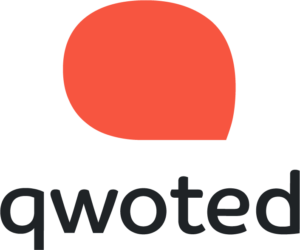Qwoted 100 PR superstar: Amy Stern of 3E Public Relations
Our popular Qwoted 100 series returns — just in time for back to school, you might say — with a PR star uniquely positioned to tell the difference between a “key executive” and an “industry thought leader.” Many a thought leader begins as an exec, but few execs ever come close to thought leader status. Enter Amy Stern — herself an executive as the Senior Vice President at 3E Public Relations in the New York metro area — who makes her mark by finding and cultivating media relationships that spotlight her hard-working clients.
Here, Stern shares her thoughts on a broad range of subjects from how relationships grow to the fine art of leaving behind email for the good old-fashioned phone call.
Qwoted: What do you see as the future of PR—technologically, strategically, or in any category you’re passionate about?
Amy Stern: I believe two essential ingredients will remain essential to successfully secure media placement: personal relationships and the ability to clearly communicate the news value of your message. Regardless of new developments in tech, the ability to develop relationships with the reporters we pitch is essential. While it doesn’t mean you can’t be successful pitching a story to someone you’ve never worked with, there is no substitute for honing the ability to develop media relationships based on mutual respect and a keen understanding of the outlet’s target audience. As we speak, I can think of numerous such relationships, some more than 20 years long and others more recent, that have led to high-profile features on behalf of my clients, over and over again.
At the core, is not abusing the relationship, pitching only those stories that are applicable to the outlet’s readers, not pitching every client and every story I have. As a result, these journalists know that when they see my email in their inboxes, I have something timely and relevant to say and that it will resonate with their readers or viewers.
Qwoted: What do you think you do that other PRs could learn from?
Stern: I still rely on phone communication. While my initial pitches are always via email, I still follow up by telephone to select contacts and have found even in the year 2023, some of my biggest hits were the result of sharing details beyond those I could communicate by email. These conversations can also reveal other valuable insights such as the arrival of a new anchor with interest in a specific topic, an upcoming news special that requires an industry expert or a recently launched podcast in need of fresh interview prospects. Remembering to ask about a sick pet or how the journalist found a dress for their child’s recent nuptials only furthers the personal connection.
Qwoted: What’s your toughest challenge with reporters?
Stern: The toughest challenge is not hearing back when you know your pitch checks all the boxes. Recently I pitched a sustainability story that was really newsworthy but several key reporters I thought would be a great fit did not respond. I know journalists can’t respond to every email but when the subject matter is a match and the news impacts the category — and aligns with several current industry trends — it would help to know what’s missing.
Qwoted: How do you approach breaking through the noise floor to get effective coverage?
Stern: I always try to put myself in the shoes of the journalists I work with and think, “If I were representing this media outlet and received this pitch, how would I respond?” The true litmus test is pretending you’re the journalist and asking yourself, “Why should I care?” I know this sounds a bit glib, but a truly good pitch that will generate results can answer this question right away.
Qwoted: How does PR in 2023 square with the future of journalism?
Stern: I’m not sure any of us really know the answer. But in my 25-plus years in the field I think the reduction in the number of news outlets and consolidation of their staffs has had a big impact on who and where we get our news from — and the more this pool shrinks, the more the messaging will be controlled by a limited number of outlets.
In addition, the evolution of social media will continue to impact the way publicists do their jobs. We’ll need to remain vigilant regarding the introduction of new platforms and as always, assist our clients by evaluating those they they need to be on and those they don’t. A communications strategy that harnesses the best of PR/media relations, social media, and content creation in an effort to maintain a steady flow client news will continue to inform how we counsel our clients — aided by developments in technology that improve data collection so we can streamline how we target and to whom.
Qwoted: What advice would you give to those seeking to find an effective PR person?
Stern: Look at examples of messaging that really resonated with you and find out who the experts were that crafted the campaign. In addition, ask other businesses and business leaders about their experiences as well as recommendations.
Qwoted: What is your golden rule of PR?
Stern: Treat every publicist like you’d like to be treated — respect them for the job they are trying to do and see how you can become a valuable resource that helps them do the job they’ve been asked to do: providing valuable content to their audience, regardless of if that audience is consuming content via print, digital or broadcast media.
Qwoted: Anything else to add?
Stern: I love what I do! The challenge of creating a pitch and the rush that results when it leads to placement continues to invigorate me.
You can connect with Amy Stern of 3E Public Relations via email at Astern@3epr.com or connect with her on LinkedIn.

Lou Carlozo is Qwoted’s Editor in Chief and the Editor/Publisher of Talking Biz News. Email lou@qwoted.com or connect on LinkedIn.
POPULAR POSTS

